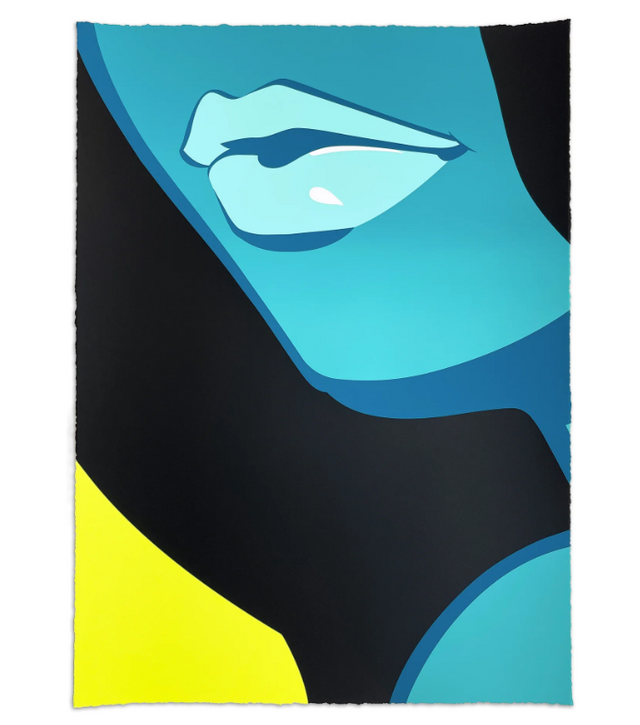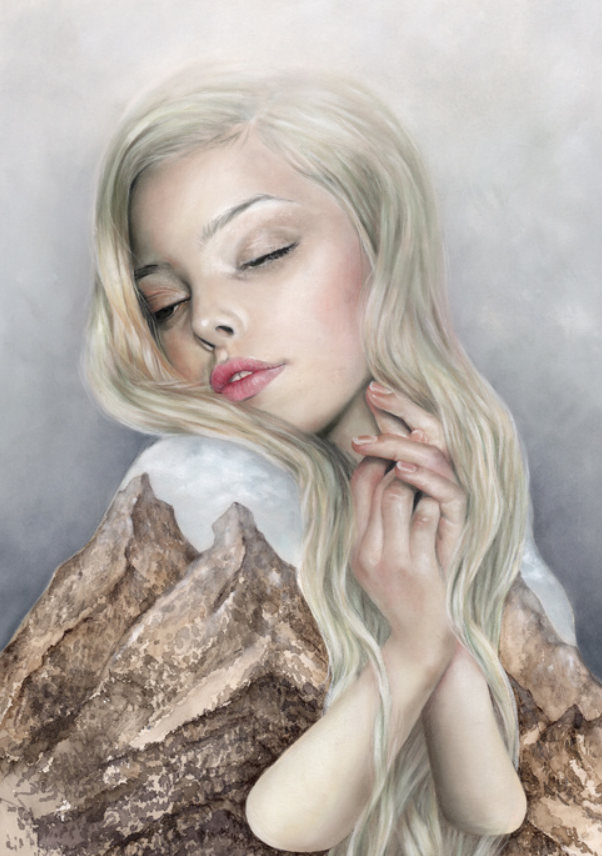
Hair

Jason Levesque Miss Red Hood Giclee Print by Jason Levesque
Miss Red Hood Artwork Giclee Limited Edition Print on Fine Art Paper by Pop Culture Graffiti Artist Jason Levesque. 2014 Signed & Numbered Limited Edition of 100 Artwork Size 18x12
$133.00

Joanne Nam Bruise Giclee Print by Joanne Nam
Bruise Artwork Giclee Limited Edition Print on Fine Art Paper by Pop Culture Graffiti Artist Joanne Nam. Joanne Nam - "Bruise" fine art giclee print signed and numbered by the artist edition of only 30 copies 14" x 14"
$99.00

Oneq Den En Ken Giclee Print by Oneq
Den En Ken Limited Edition Giclee Print on Fine Art Paper by Oneq counter-culture street artist art. ONEQ - "DEN EN KEN" limited edition fine art print hand-numbered edition of 80 copies
$129.00

Bec Winnel You Complete Me Giclee Print by Bec Winnel
You Complete Me Giclee Print by Bec Winnel Artwork Limited Edition Print on Fine Art Paper Graffiti Pop Street Artist. 2014 Signed & Numbered Limited Edition of 25 Artwork Size 11x16.5 Stylized Young Blond Woman with Eyes Closed Jacketed in Rocky Mountains. Intertwining Nature and Femininity in "You Complete Me" by Bec Winnel The 'You Complete Me' Giclee Print by Bec Winnel is a captivating work of art that embodies the spirit of street pop art and graffiti art while delving into a more introspective and organic realm. This limited edition print, with only 25 copies available, is a signed and numbered piece that measures 11x16.5 inches. It presents an ethereal portrayal of a stylized young blond woman with her eyes closed, her figure seamlessly blending with the rugged majesty of rocky mountains. Bec Winnel: A Maestro of Visual Poetry Bec Winnel, an Australian artist, brings a delicate balance between human emotion and the sublime power of nature in her artwork. Her work is not just seen; it is felt. In 'You Complete Me,' the symbiosis between the woman and the mountains suggests a narrative of unity and wholeness. Winnel's infusing her Street Pop Art with elements traditionally not associated with the urban style, such as landscapes and natural motifs, creates a unique and captivating aesthetic. The juxtaposition of the soft, dreamlike quality of the woman's visage against the stark, enduring strength of the mountains evokes a sense of peace and a profound connection to the earth. Street Pop Art and Its Evolution Street Pop Art, a genre known for its vibrant and often rebellious energy, is typically associated with urban environments and graffiti culture. However, artists like Bec Winnel are expanding this definition, incorporating natural elements and softer imagery into the framework of Street Pop Art. In doing so, they are redefining what graffiti artwork can be. 'You Complete Me' challenges the viewer to see beyond the concrete walls and to find the correlation between the organic and the artificial. Winnel's work is a testament to Street Pop Art's versatility and ever-evolving nature, demonstrating that it is not confined to cityscapes and can indeed encompass a broader range of themes and subjects. The Significance of Limited Edition Art in Modern Culture The concept of limited edition prints plays a crucial role in disseminating and appreciating art in contemporary culture. 'You Complete Me,' like other limited edition prints by Bec Winnel, offers an intimate connection with the artist's vision. The exclusivity of owning one of only 25 prints elevates the piece's value in terms of monetary worth and personal significance. Collectors of Winnel's work are not merely acquiring a piece of art; they engage with a fragment of the artist's soul and become part of a select group who hold the keys to this visual narrative. This scarcity also highlights the impact that Street Pop Art and Graffiti Artwork have had on modern art, proving that these genres hold significant weight in the art community and can possess the same gravitas as classical art forms. In the final analysis, the 'You Complete Me' Giclee Print is a profound expression of Bec Winnel's artistic philosophy, intertwining the human element with the grandeur of the natural world. It is a shining example of how Street Pop Art can transcend its urban roots and explore more profound, universal themes. The piece is not only a reflection of Winnel's talent but also a reflection of the dynamic and changing landscape of contemporary art. Through her work, Winnel contributes to the dialogue about the boundaries and intersections of art genres, ensuring her place in the annals of modern art history.
$225.00

Conrad Roset Muse #563 Giclee Print by Conrad Roset
Muse #563 Artwork Giclee Limited Edition Print on 330 G/M2 Paper by Pop Culture Graffiti Artist Conrad Roset.
$129.00






